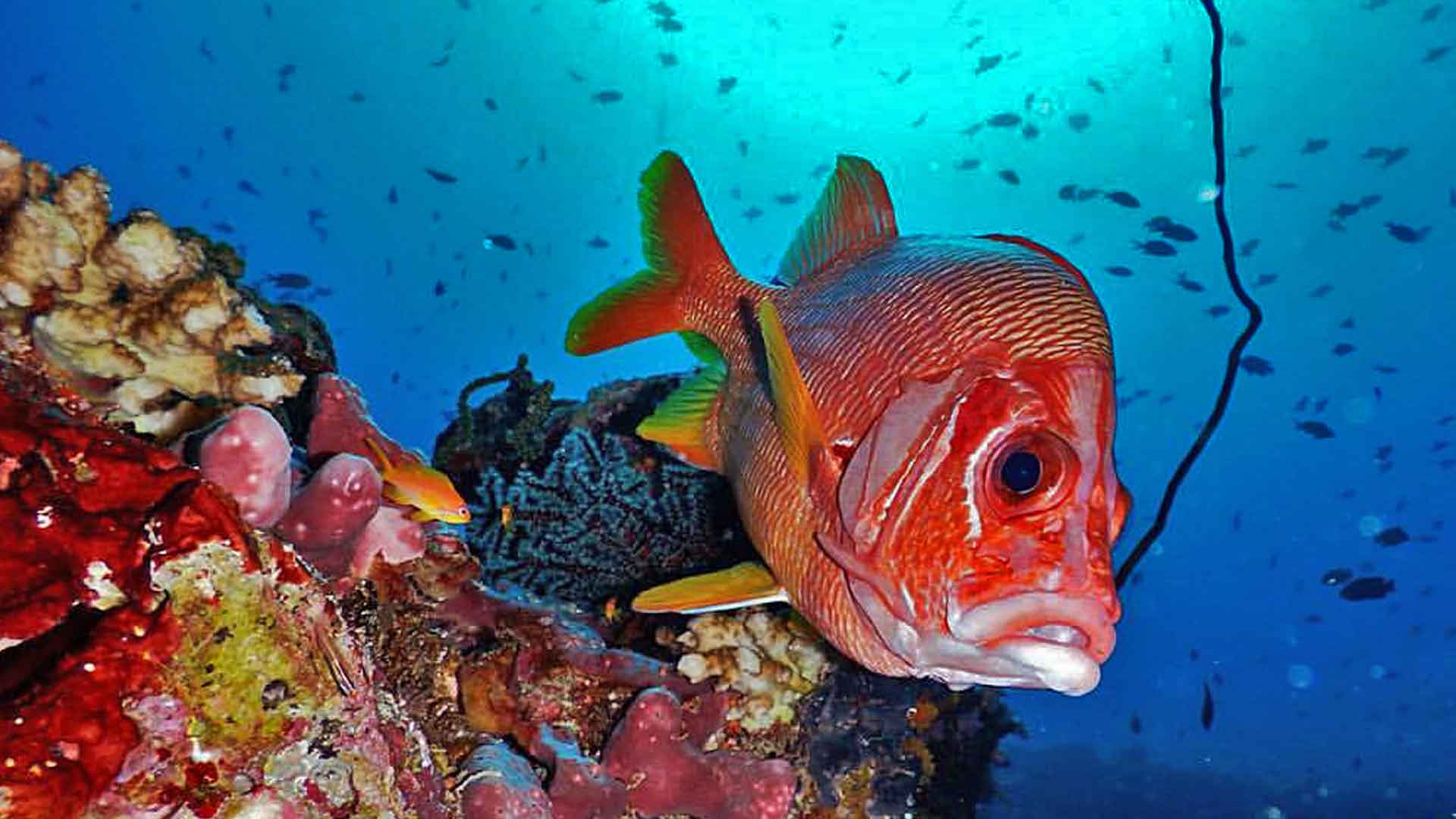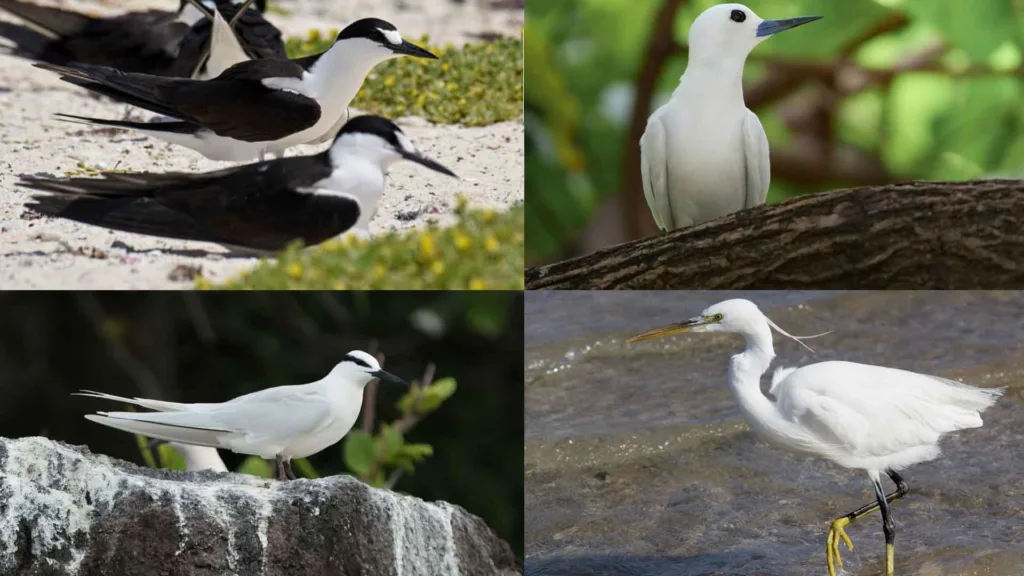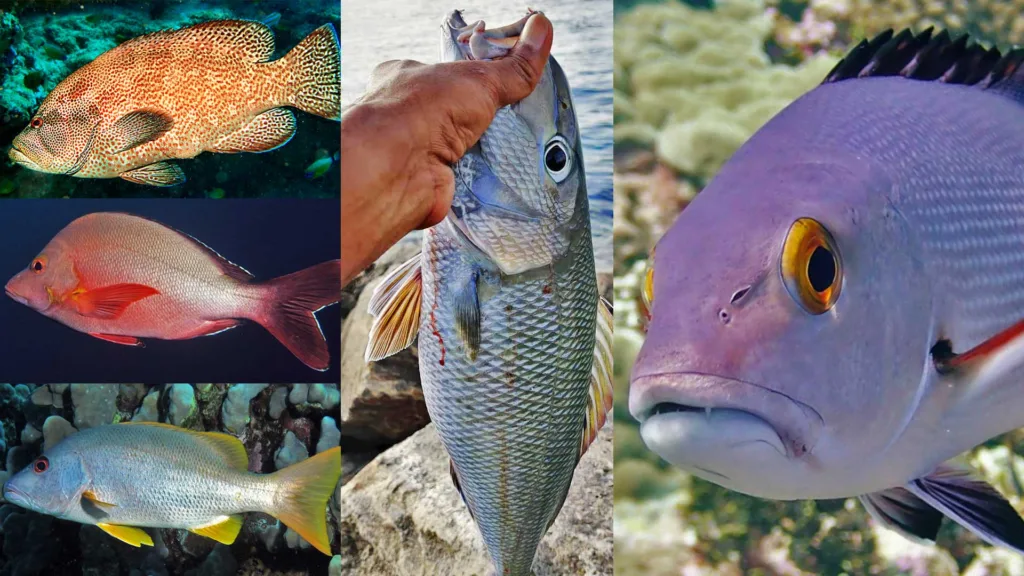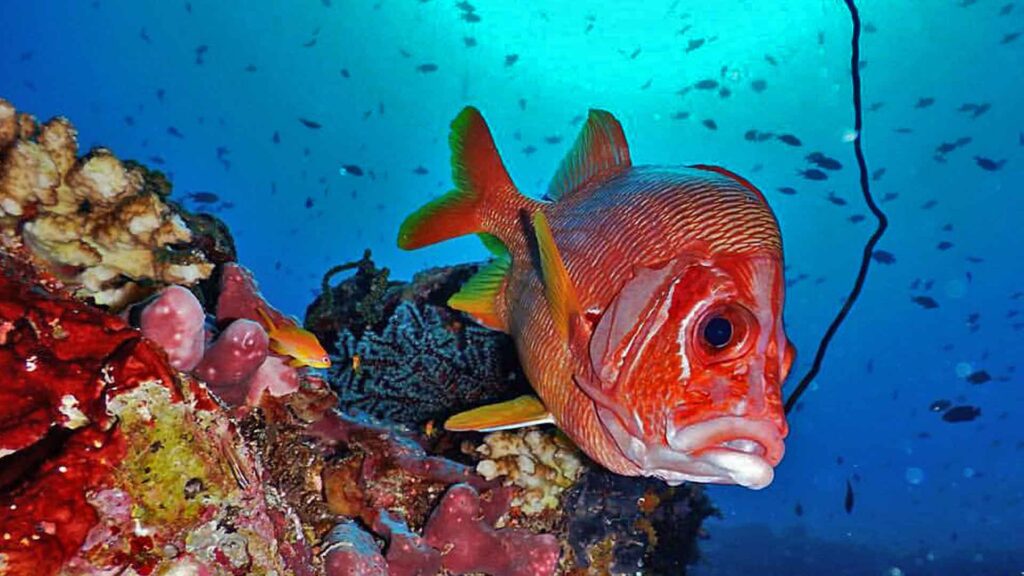
Common Name: Sabre squirrelfish
Scientific Name: Sargocentron spiniferum
LOCAL NAME: Raiverimas
FAMILY: Holocentridae
ORDER: Beyciformes
DIET: Carnivore
SIZE: up to 35 to 45 cm
This is a series of articles I’ve decided to publish under the title “Diver’s Len.”
The goal of these articles is to inform readers about the species of marine life found in the Maldivian ocean and captured by photographers and videographers.
In addition to the photographs and videos, we have included an overview of general and scientific information about the species.
The photographer or diver has granted permission for the publication of the photos and videos in these articles.The sabre squirrelfish, also known as raiverimas, is a tasty fish. Despite its boniness, this fish is incredibly tasty. Fahavera is what we call it on our island, Fuvahmulah. This species is a delicious fish that we used to eat, particularly at night.
I remember that our fisherman went out at night to catch these beautiful fish. When yellowfin tuna or tuna are scarce on our island, our fishermen target them at night.
This species lives in deep lagoons to outer reefs, often with large coral heads, and shelters beneath overhangs to at least 30 meters depth. It is commonly seen in small groups in the Maldives but is solitary elsewhere. It is also referred to as the giant squirrelfish due to its status as the largest species of squirrelfish. This fish is widely distributed throughout the Indo-Pacific.
Squirrelfishes differ from soldierfishes by having a much larger spine on their gill cover (which is venomous in some species) and a pointer head.Out of a total of over thirty species, two genera and at least fourteen species are found in the Maldives.
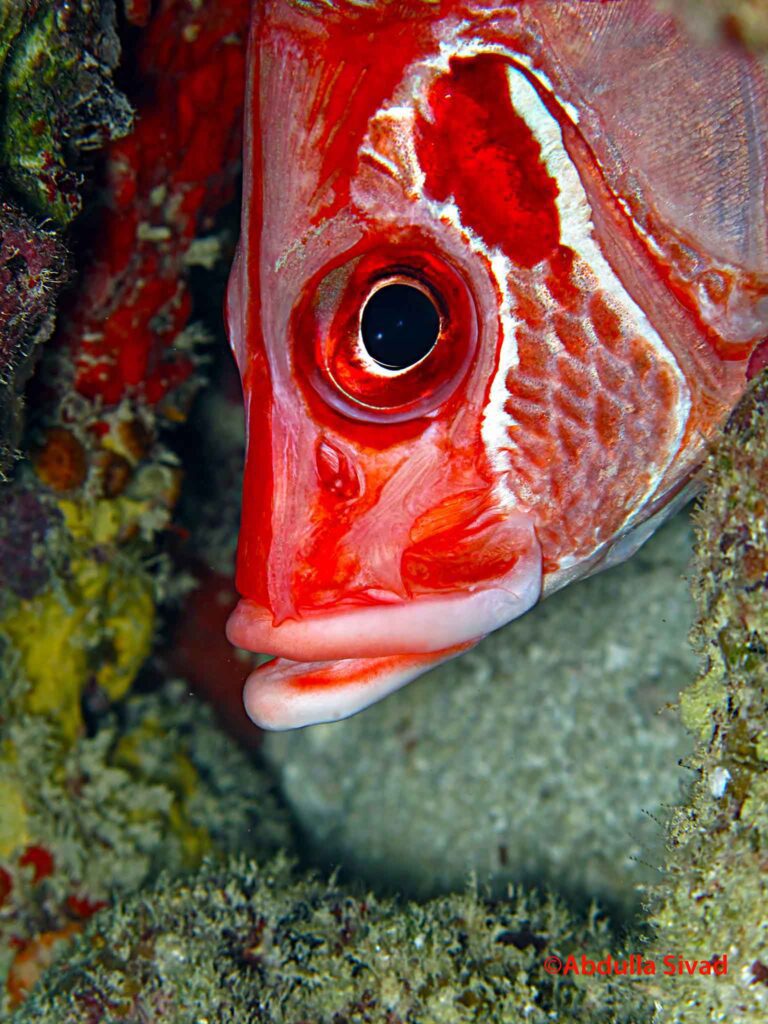
Some species form groups in caves during the day, but their main activities occur at night. Many other species remain hidden during the day and are rarely seen, except at night, when they hunt for shrimps, other swimming crustaceans, and small fish.
Some species are abundant in coral-rich lagoons, which provide excellent shelter during the day, while others are rarely seen due to their preference for deep water along outer reef walls.
Eleven spines and fourteen to sixteen rays make up the dorsal fin. The anal fin typically includes nine to ten rays and four spines. There are 14–16 rays on the pectoral fin. Body depth ranges from 2.4 to 2.6 in standard length. The dorsal profile of the head is nearly straight. When you close your mouth, your lower jaw protrudes. Adults’ preopercular spines are longer than their eye diameters.
This fish has a red body. The edges of the scale are silvery white. The head features a large, vertically elongated white crimson spot behind the eyes. Dark red spikes cover the spiny part of the dorsal fin. The spinous dorsal membranes are not incised.
Reference
Anderson, R. (1997), Fishes of the Maldives. Marine Research Centre
Kuiter, R. (2014), Fishes of the Maldives. Atoll Editions
